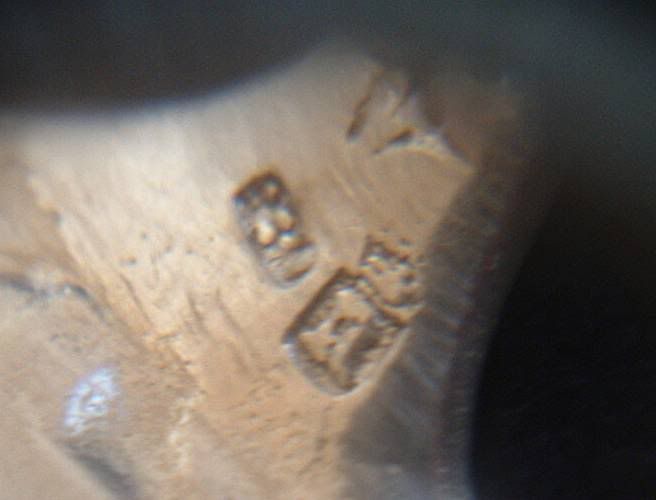Found some interesting info at the library yesterday. While looking for another book, I literally stumbled across "Chester Silver 1837-1962" by Maurice H. Ridgway. The book illustrated maker's marks, but they did not include any version of a BML or BM. However, they did have an entry explaining Muller's connection to Chester assay. Here is the full entry.
Berthold Muller, London
Franz Carl Berthold Muller was first known at Hatton Garden, but by the time he registered his mark at Chester, 10 March 1898, he had moved to 187 Wardour St., Soho and traded as B. Muller & Son. The elder Muller died in Heidelberg in 1911. The firm acted as agent for imported wares from the Hanau works at Neresheimer, Germany, who made fine copies of earlier masters of German origin. Muller also imported wares from W. Lobensteyn, Schoonhoven, Holland and also for James Turner of the Colonnade Buxton, which were imported through Chester.
A wager cup given as a wedding present in 1905 having the grapes mark of Nuremberg and the import mark of Chester (acorn) the .925, the script D (for 1900) and the mark of Berthold Muller.
In an interview with A. Vincent Ward in 1973, the last Assay Master spoke a great deal of silver being sent by train to Chester from London including a large number of figures and he spoke of a dutch figure of a boy and girl in the form of a pepper pot, each figure with detachable heads by Berthold Muller.
Note: Ridgway seems to have transposed - Hanau and Neresheimer- Hanau being the city and Neresheimer being a manufacturer.
Considering the motif of your spoon, perhaps it was made by Lobensteyn of Schoonhoven.
Since the bulk of this thread discusses the English marks, I'm going to move it over to British Silver, hopefully someone there has a reference that'll nail down the BML sponsor mark.
Regards, Tom


